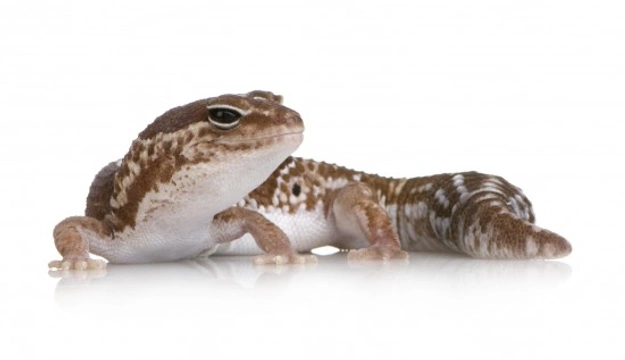
Caring for an African Fat Tailed Gecko
The Fat Tailed Gecko is one of the more common pet Geckos kept in captivity, although they have not quite reached the level of popularity of the more common Leopard Gecko, partially because they are rather harder to breed. However, if you are seeking a pet lizard and know of an exotics retailer that stocks Fat Tail Geckos, they are certainly worthy of a second glance.
In this article, we will look at the care and feeding requirements of the Fat Tailed Gecko.
Space and accommodation
The Fat Tailed Gecko can be kept either alone or in pairs or groups, and as they are not among the largest of the lizard species, they do not require an enormous vivarium. To keep one or two Fat Tailed Geckos, look at getting a tank that is a minimum of 60cm long by 30cm wide and deep. To keep more than two together, increase the length of the tank by 45cm per additional lizard.
Decor, substrate and living environment
The Fat Tailed Gecko hails from hot, humid parts of the world, and it is important to mimic their natural environment as far as is possible within the domestic vivarium. For their substrate, soil is the preferred medium as this retains moisture without getting soggy, and enables the natural burrowing behaviour of the species. While it is possible to use a dry substrate, you will need to provide a moisture box for your pet if you wish to do so. The Fat Tailed Gecko requires a slightly higher humidity level than the Leopard Gecko, which is important to bear in mind if you have kept other gecko species before.
The vivarium should be decorated with a range of rocks, driftwood and plastic plants, to provide coverage and hiding places for your lizards. Great care should be taken when placing ornaments within the tank, and the ornaments should be put in on the floor before the substrate is added, as Fat Tail Geckos are accomplished burrowers, and may dislodge ornaments that are not securely placed.
Heating provision and temperature
As with all other reptile species, the Fat Tailed Gecko needs to be able to find a range of different temperature gradients within different parts of their tank, and the temperature should not be uniform across the whole enclosure. The warmer end of the tank should fall between around 86-90 degrees Fahrenheit during the day, with the cooler end being between 74-84 degrees Fahrenheit. At night, the temperature should be more consistent across the whole of the tank, and fall between the 74-78 degrees range.
There are a range of different options available to heat your vivarium, but the most widely used and preferred system for the Fat Tailed Gecko is by means of a ceramic heater, as this gives off plenty of heat at the warmer end of the vivarium without taking up a lot of valuable space. Other options include a heat lamp, or under-substrate heating mat.
Lighting the vivarium
As well as the heater itself, you will need to provide a source of light, such as a red bulb, to enable your gecko’s basking behaviour during the daylight hours. In their natural habitats, the Fat Tail Gecko is nocturnal, and will be most active at night. However, they do venture out during the day, notably to bask in the heat and up their body temperature. A simple reptile-suitable heat lamp is fine to allow for this, and the Fat Tail Gecko does not have any specialist requirements such as ultra violet lighting, making them relatively easy to provide for.
Food and water for your Fat Tailed Gecko
A source of clean, fresh water that is available at all times is vital for your gecko, and the Fat Tailed Gecko hails from Western Africa, which benefits from high humidity levels. A low, shallow and wide water dish that can be easily cleaned and that will be hard to tip over is your best choice.
The Fat Tailed Gecko eats a range of different foods, but they are primarily insectivores, meaning that they will eat insects as the larger part of their staple diet. However they may also develop a taste for tinned dog food, defrosted pinkie mice and other treats!
In terms of live food, crickets, locusts, mealworms and waxworms are the ideal combination to feed, in order to meet your gecko’s nutritional requirements. Live insects fed to your gecko should be as high in nutrients as possible, which means ensuring that they are well-fed and healthy before offering them to your gecko, and also, that you may need to go through the process of gut-loading them before offering them to your pet.
When young, the Fat Tailed Gecko will have a hearty appetite, and will need to be fed small insects on a daily basis. As they get older, their feeding requirements will drop to once or twice a week, as they no longer need additional food in order to grow. Dusting the shells of your gecko’s food with a calcium supplement before feeding them is also important, to allow for healthy bone growth and development in your pet.



